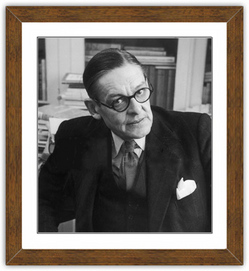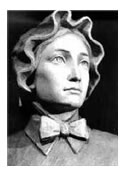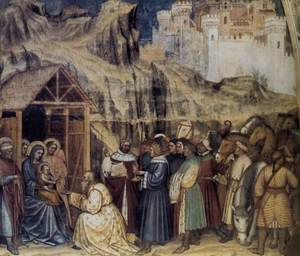Every year the Propogation of the Faith, the office of Ivan Cardinal Dias, publishes a list of those who have been killed because of their faith in Jesus Christ and the Church. In 2008, 20 people gave a powerful witness to the Light of the World. These are our brothers and sisters in the faith, adopted sons and daughters of God. Pray for them; pray for their killers; imitate their faith. Read the dossier here.
Epiphany Novena for priests
 Little more than a year my friend Fr. Mark at Vultus Christi initiated a plan of prayer for the priesthood, particularly in reparation for sins committed by priests. This plan of prayer was inspired by a letter from Cardinal Claudio Hummes, OFM to the world’s bishops encouraging them to designate people, including priests, whose “ministry” it would be to pray for the priesthood in the wake of the sex abuse crisis. The point of the letter was to begin to think about and work for a renewal of the priesthood. Today begins a novena inspired by Saint Peter Julian Emyard who in 1857 began his own renewal of the priesthood adoration movement. Let’s be united in prayer for the intentions of our priests.
Little more than a year my friend Fr. Mark at Vultus Christi initiated a plan of prayer for the priesthood, particularly in reparation for sins committed by priests. This plan of prayer was inspired by a letter from Cardinal Claudio Hummes, OFM to the world’s bishops encouraging them to designate people, including priests, whose “ministry” it would be to pray for the priesthood in the wake of the sex abuse crisis. The point of the letter was to begin to think about and work for a renewal of the priesthood. Today begins a novena inspired by Saint Peter Julian Emyard who in 1857 began his own renewal of the priesthood adoration movement. Let’s be united in prayer for the intentions of our priests.
Fr. Mark has also developed a program of prayer called Thursdays in Adoration and Reparation for Priests which keeps the Holy Thursday event of Our Lord forming the priesthood and giving us the gift of His Eucharistic Presence.
There are many opportunities to spend time in prayer before the Blessed Sacrament in parishes today (more now than a few years ago). And there religious orders who make it a point to adore Christ in the Blessed Sacrament regularly, if not daily, for example, the Dominican nuns in North Guilford, CT and Linden, VA to name two monasteries, the pink sisters found in cities such as Philadelphia, St. Louis, Lincoln and Corpus Christi; the monks of Saint Vincent Archabbey and Newark Abbey have the daily practice of adoration prior to the Divine Office, the monks of Saint Mary’s Abbey (Morristown, NJ) have adoration and confession on the second Friday of the month for vocations and for the priesthood, the monks of Belmont Abbey (Belmont, NC) have recently dedicated an adoration chapel in the center of their college campus in honor of Saint Joseph where monks, students and other interested people gather with the Eucharistic Lord.
What better time than in Epiphanytide to develop a habit of prayer in adoration of the Blessed Sacrament?
Saint John Neumann
 O God, who willed blessed John, thy confessor and bishop, to shine in pastoral works; graciously grant that, following his teachings and examples, we might obtain eternal life.
O God, who willed blessed John, thy confessor and bishop, to shine in pastoral works; graciously grant that, following his teachings and examples, we might obtain eternal life.
“John Nepomucene Neumann spent the whole of his adult life striving to live as a total Christian. Nevertheless, no one would have been more shocked than John Neumann at the thought that one day he would be canonized a saint. The possibility never crossed his mind. While his whole consciousness was directed toward serving God in immediate relationship with Jesus Christ, the Blessed Virgin Mary and the saints, he was constantly aware of shortcomings in saying his prayers, in faithfulness to the rule of life he had set for himself, and in the accomplishment of his daily duties.
“One of his primary objectives was to introduce the Forty Hours Devotion – a three-day ceremony in which the Blessed Sacrament was exposed in a monstrance on the altar, and priests and people encouraged to keep a constant vigil in the church, honoring Christ’s bodily presence among them. Neumann drew up the diocesan-wide schedule, recognizing the fact that while this practice would be fairly easy in the large city parishes it would be most difficult in the smaller settlements. His objective was to have this devotion in progress somewhere in the diocese, all year long. (Francis Xavier Murphy, C.SS.R.)
O Saint John Neumann, your ardent desire of bringing all souls to Christ impelled you to leave home and country; teach us to live worthily in the spirit of our Baptism which makes us all children of the one Heavenly Father and brothers and sisters of Jesus Christ, the first-born of the family of God.
Obtain for us that complete dedication in the service of the needy, the weak, the afflicted and the abandoned which so characterized your life. Help us to walk perseveringly in the difficult and, at times, painful paths of duty, strengthened by the Body and Blood of our Redeemer and under the watchful protection of Mary our Mother.
May death still find us on the sure road to our Father’s House with the light of living Faith in our hearts. Amen.
A few dates in the saint’s life
-
28 March 1811 at Prachititz, Czech Republic
-
28 June 1836 ordained priest by Bishop John Dubois, NYC
-
January 1842 taking his vows at Baltimore, MD, the first Redemptorist in the USA
-
28 March 1852 ordained bishop 4th bishop of Philadelphia, PA; The Episcopal motto was Passio Christi, conforta me – Passion of Christ strengthen me
-
5 January 1860 of a stroke at 13th and Vine Streets, Philadelphia
-
19 June 1977 canonized by Pope Paul VI
TS Eliot: RIP 44th anniv.
Saint Elizabeth Ann Seton
 Lord God, You blessed Elizabeth Seton with gifts of grace as wife and mother, educator and foundress, so that she might spend her life in service to Your people. Through her example and prayers may we learn to express our love for You in love for others.
Lord God, You blessed Elizabeth Seton with gifts of grace as wife and mother, educator and foundress, so that she might spend her life in service to Your people. Through her example and prayers may we learn to express our love for You in love for others.
At the Mass which Pope Paul VI declared Seton a saint he said:
Saint Elizabeth Ann Seton is an American. All of us say this with spiritual joy, and with the intention of honoring the land and the nation from which she marvelously sprang forth as the first flower in the calendar of the saints. This is the title which, in his original foreword to the excellent work of Father Dirvin, the late Cardinal Spellman, Archbishop of New York, attributed to her as primary and characteristic: “Elizabeth Ann Seton was wholly American”! Rejoice, we say to the great nation of the United States of America. Rejoice for your glorious daughter. Be proud of her. And know how to preserve her fruitful heritage. This most beautiful figure of a holy woman presents to the world and to history the affirmation of new and authentic riches that are yours: that religious spirituality which your temporal prosperity seemed to obscure and almost make impossible. Your land too, America, is indeed worthy of receiving into its fertile ground the seed of evangelical holiness. And here is a splendid proof-among many others-of this fact.
May you always be able to cultivate the genuine fruitfulness of evangelical holiness, and ever experience how-far from stunting the flourishing development of your economic, cultural and civic vitality -it will be in its own way the unfailing safeguard of that vitality. Saint Elizabeth Ann Seton was born, brought up and educated in New York in the Episcopalian Communion. To this Church goes the merit of having awakened and fostered the religious sense and Christian sentiment which in the young Elizabeth were naturally predisposed to the most spontaneous and lively manifestations. We willingly recognize this merit, and, knowing well how much it cost Elizabeth to pass over to the Catholic Church, we admire her courage for adhering to the religious truth and divine reality which were manifested to her therein. And we are likewise pleased to see that from this same adherence to the Catholic Church she experienced great peace and security, and found it natural to preserve all the good things which her membership in the fervent Episcopalian community had taught her, in so many beautiful expressions, especially of religious piety, and that she was always faithful in her esteem and affection for those from whom her Catholic profession had sadly separated her.
· Born in New York City, August 28, 1774
· Married William Magee Seton, January 25, 1794; mother of 5 children; William died in Pisa, December 27, 1803
· Received into the Catholic Church, Ash Wednesday, March 14, 1805, by Father Matthew O’Brien in St. Peter’s Church, Barclay Street, NY
· Formation of the new community in 1808, first Religious Congregation of women in the USA
· Died at Emmitsburg, Maryland, January 4, 1821
· Canonized on September 14, 1975 by Pope Paul VI
Her devotion to the Eucharist, sacred Scripture, especially the 23rd Psalm, and the Blessed Virgin Mary are hallmarks of Seton’s spiritual life. Following the example of Saints Vincent de Paul and Louis de Marillac hers was an apostolic spirituality.
The Church says officially: In Emmitsburg, Maryland, USA, Saint Elizabeth Ann Seton who, after having been widowed, professed the Catholic Faith and worked competently at educating girls and feeding impoverished children as a member of the Congregation of the Sisters of Charity of Saint Joseph, which she founded. (Martyrologium Romanum, 2005)
The Epiphany Proclamation
The Epiphany Proclamation
Dear brothers and sisters, the glory of the Lord has shone upon us, and shall ever be manifest among us, until the day of his return. Through the rhythms of times and seasons let us celebrate the mysteries of salvation.
Let us recall the year’s culmination, the Easter Triduum of the Lord: his last supper, his crucifixion, his burial, and his rising celebrated between the evening of the 9th of April and the evening of the 12th of April.
Each Easter – as on each Sunday – the Holy Church makes present the great and saving deed by which Christ has for ever conquered sin and death.
From Easter are reckoned all the days we keep holy.
Ash Wednesday, the beginning of Lent, will occur on the 25th of February.
The Ascension of the Lord will be commemorated on the 21st of May.
Pentecost, the joyful conclusion of the season of Easter, will be celebrated on the 31st of May.
Corpus Christi will be celebrated on the 11th of June.
The First Sunday of Advent will be celebrated on the 29th of November.
Likewise the pilgrim Church proclaims the passover of Christ in the feasts of the holy Mother of God, in the feasts of the Apostles and Saints, and in the commemoration of the faithful departed.
To Jesus Christ, who was, who is, and who is to come, Lord of time and history, be endless praise, for ever and ever.
R. Amen.
Epiphany
Vidimus stellam ejus in Oriente,
et venimus cum muneribus adorare Dominum.
We have seen his star in the East and are come with gifts to adore the Lord.
(Matthew 2:2)
O God, who today revealed your Only-begotten, a star having been the guide, graciously grant, that we, who have already come to know you from faith, may be led all the way unto the contemplation of the beauty of your majesty.
Blessed Columba Marmion’s essage on the Epiphany is an excellent meditation.
Begotten of the Father before the daystar shone or time began, the Lord our Savior has appeared on earth today.
Blessing of Chalk on Epiphany
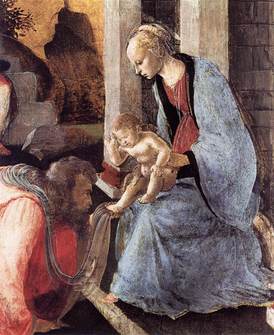 Epiphany inscription over the doorway of the home:
Epiphany inscription over the doorway of the home:
20 + C + M + B + 09
The letters have two meanings. They are the initials of the traditional names of the Three Magi: Caspar, Melchior and Balthasar. All three revered as saints and honored in the Munich cathedral. We abbreviate the Latin words “Christus mansionem benedicat” (“May Christ bless the house”). The letters recall the day on which the inscription is made, as well as the purpose of blessing.
The crosses represent the protection of the Precious Blood of Christ, whom we invoke, and the holiness of the Magi who adored of the infant Jesus. The inscription is made above the front door, so that all who enter and depart this year may enjoy God’s blessing. The month of January bears the name of the Roman god Janus, the doorkeeper of heaven and protector of the beginning and end of things. This blessing “christens” the ancient Roman observance of the first month.
Blessing of Chalk
V. Our help is the name of the Lord.
R. Who made heaven and earth.
V. The Lord be with you.
R. And with your spirit.
Let us pray.
Bless, O Lord God, this creature chalk to render it helpful to your people. Grant that they who use it in faith and with it inscribe upon the doors of their homes the names of your saints, Caspar, Melchior, and Balthasar, may through their merits and intercession enjoy health of body and protection of soul. Through Christ our Lord. Amen.
And the chalk is sprinkled with Holy Water.
Reclaiming reverence when receiving Holy Communion
On December 19th I brought to our attention a recently published book about Communion in the hand by Bishop Schneider. You can read the entry here. As a follow-up, here is a bulletin note from a Connecticut pastor raising the question of the fittingness of the faithful’s reception of Holy Communion in the hand. The argument is cogent.
The beginning of each year is often a time of “New Year Resolutions”. Over the next few weeks in this Pastor’s Column I would like to suggest some “New Year Resolutions” having to do with our Catholic Faith. My first suggestion is during 2009 start exercising the option of receiving Holy Communion on the tongue in Mass. Let me explain why.
This past summer Catholics were horrified when a professor at the University of Minnesota willfully desecrated the Eucharist. On the internet Professor Paul Zachary Myers invited anyone to obtain for him a consecrated Host from a Catholic Church so that he could desecrate It. Another man read about the request and took a Host from the London Oratory, videotaping Himself taking It from the Mass. He then sent the Host to Professor Myers and posted the video on the internet. Professor Myer then proceeded to drive a rusty nail through the Host in order to show the “absurdity” of the Catholic belief in the True Presence, and posted photos of the event on his website. Unfortunately the event set off a series of copycat crimes, and these desecrations are all over the internet.
What can be behind so much hatred? Even a child understands that it is not right to mock what others hold to be sacred. I have offered Mass in reparation for this sacrilege, and I know that many good Catholics have also done forms of prayer and penance in order to console the wounded heart of Our Lord.
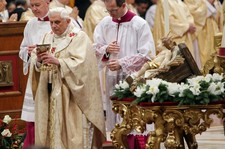 Do you remember last year here at St. Mary’s when we found a Host under one of the pews in the church? I know from other priests that this happens every once in a while in other parishes as well. These incidents remind us that it would certainly be more difficult for people to take the Host improperly if everyone were receiving Holy Communion on the tongue. As the Catholic Church teaches, “If there is a risk of profanation, then Holy Communion should not be given in the hand to the faithful” (Redemptionis Sacramentum, 92).
Do you remember last year here at St. Mary’s when we found a Host under one of the pews in the church? I know from other priests that this happens every once in a while in other parishes as well. These incidents remind us that it would certainly be more difficult for people to take the Host improperly if everyone were receiving Holy Communion on the tongue. As the Catholic Church teaches, “If there is a risk of profanation, then Holy Communion should not be given in the hand to the faithful” (Redemptionis Sacramentum, 92).
Many people born prior to the Second Vatican Council will remember when everyone received Holy Communion on the tongue and kneeling. This has been the long held practice for thousands of years (although during certain periods of the early Church it did allow Communion in the hand). While many think that it was Vatican II that called for this change, it is important to note: Vatican II never called for Communion in the hand. Communion in the hand was the result of disobedience which forced the hand of the Church (no pun intended!).
After the Second Vatican Council some dioceses in the world started to make their own rules about receiving the Communion in the hand, disobeying the laws of the universal Church. Witnessing this practice without approval, the Vatican stated that it feared that this disobedience would lead to “…both the possibility of a lessening of reverence toward the august sacrament of the altar, its profanation, and the watering down of the true doctrine of the Eucharist” (Memoriale Domini).
Therefore in 1968 Pope Paul VI graciously sent out a questionnaire to all the bishops of the world asking if there should be a prudent change in the Church’s practice on how Communion would be distributed. The poll numbers came back overwhelming against Communion in the hand. Hence the Vatican concluded: “The answers given show that by far the greater number of bishops think that the discipline currently in force should not be changed. And if it were to be changed, it would be an offense to the sensibilities and spiritual outlook of these bishops and a great many of the faithful” (Memoriale Domini).
Nonetheless the disobedience continued and some of these dioceses petitioned Rome to officially permit Communion in the hand. A year later, in 1969, Pope Paul VI gave an indult to the French bishops permitting each bishop to decide the question in his own diocese (En réponse a la Demande). An indult is a special permission for a particular situation, rather than a universal norm. Nonetheless eventually the majority of dioceses in the world took advantage of the indult and simply permitted the practice.
Why did the Pope allow it? Perhaps it can be best summed up by the words of Our Lord about why divorce was allowed in the Old Testament: “For your hardness of heart Moses allowed you to divorce your wives” (Matthew 19:8). Their disobedience had reached such a point that it would have been difficult to have them return to the traditional practice.
Nonetheless some countries like Sri Lanka did not use the indult, and maintained the long held tradition of receiving only on the tongue. Recently there have also been dioceses around the world such San Luis, Argentina and Lima, Peru that have returned to the traditional practice and no longer permit Communion in the hand. This is an option fully supported by the Congregation of the Doctrine of the Faith.
Furthermore, if one does receive Communion on the hand, there is always the danger that particles may be remain in the hand. The Council of Trent infallibly teaches that Our Blessed Lord is truly present even in the particles as well: “If anyone denies that in the venerable sacrament of the Eucharist the whole Christ is contained under each form and under every part of each form when separated, let him be anathema” (Chapter VIII, Canon 3). For this reason the priest always purifies his hands of particles at the end of Mass, and uses a corporal (a small white cloth meant to catch the corpus, or body, of Our Lord).
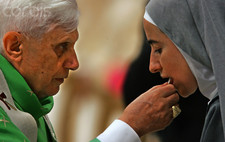 Finally another major event occurred this past year when Pope Benedict XVI asked that from now on, all who receive Holy Communion from him must receive It on the tongue and kneeling. I am sure that by insisting on this ancient practice the Pope is trying to foster a deeper respect for the Eucharist as well.
Finally another major event occurred this past year when Pope Benedict XVI asked that from now on, all who receive Holy Communion from him must receive It on the tongue and kneeling. I am sure that by insisting on this ancient practice the Pope is trying to foster a deeper respect for the Eucharist as well.
When Rome did give the indult to the French bishops in 1969 it stated, “The new manner of giving Communion must not be imposed in a way that would exclude the traditional practice.” Therefore Communion is on the tongue is still the common practice for the universal Church. While both practices are permitted in the diocese of Bridgeport, I encourage parishioners to give prayerful consideration to following Pope Benedict XVI’s lead by receiving Holy Communion on the tongue in the new year.
Sincerely in Christ,
Father Greg J. Markey, Pastor
Saint Mary’s Church, Norwalk, CT
The name of Jesus is light, food, power
Saint Bernard of Clairvaux offers a power witness to the name of Jesus. Today’s feast of the Holy Name of Jesus is a good time to consider the words of Bernard as food for the soul.
I recognize now the name hinted at by Isaiah: “My servants are to be given a new name. Whoever is blessed on earth in that name will be blessed by the Lord, Amen.” O blessed name, oil poured out without limit! From heaven it pours down on Judaea and from there over all the earth, so that round the whole world the Church proclaims: “Your name is oil poured out.” And what an outpouring! It not only bathes the heavens and the earth, it even bedews the underworld, so that all beings in the heavens and the earth, it even bedews the underworld should bend the knee in the name of Jesus, and that every tongue should
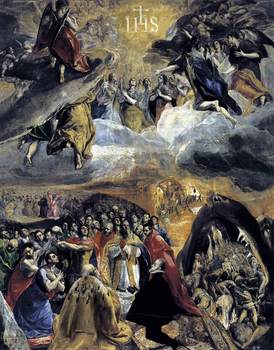 acclaim: “Your name is oil poured out.” Take the name of Christ, take the name of Jesus; both were infused into the angels, both were poured our upon men, even upon men who rotted like animals in their own dung. Thus you became a savior both of men and beasts, so countless are your mercies, O God. How precious your name, and yet how cheap! Cheap, but the instrument of salvation. If it were not cheap it would not have been poured out for me; if it lacked saving power it would not have won me. Made a sharer in the name, I share too in its inheritance. For I am a Christian, Christ’s own brother. If I am what I say, I am the heir of God, co-heir with Christ. And what wonder if the name of the Bridegroom is poured out, since he himself is pour out? For he emptied himself to assume the condition of a slave.
acclaim: “Your name is oil poured out.” Take the name of Christ, take the name of Jesus; both were infused into the angels, both were poured our upon men, even upon men who rotted like animals in their own dung. Thus you became a savior both of men and beasts, so countless are your mercies, O God. How precious your name, and yet how cheap! Cheap, but the instrument of salvation. If it were not cheap it would not have been poured out for me; if it lacked saving power it would not have won me. Made a sharer in the name, I share too in its inheritance. For I am a Christian, Christ’s own brother. If I am what I say, I am the heir of God, co-heir with Christ. And what wonder if the name of the Bridegroom is poured out, since he himself is pour out? For he emptied himself to assume the condition of a slave.
Did he not even say: “I am pour out like water”? The fullness of the divine life was poured out and lived on earth in bodily form, that all of us who live in this body doomed to death may receive from that fullness, and being filled with its life-giving odor say: “Your name is oil poured out.” Such is what is meant by the outpouring of the name, such its manner, such its extent.
By why the symbol of oil? I have yet to explain this. In the previous sermon I had begun to do so when another matter that seemed to demand mention suddenly presented itself, though I may have dallied with it longer than I intended. In this I resembled the valiant woman, Wisdom, who put her hand to the distaff, her fingers to the spindle. Skillfully she produced from her scanty stock of wool or flax a long spool of thread, out of which she wove the material that made warm clothes for the members of her household. The likeness between oil and the name of the Bridegroom is beyond doubt, the Holy Spirit’s comparison of the two is no arbitrary gesture. Unless you can persuade me otherwise, I hold that the likeness is to be found in the threefold property of oil: it gives light, it nourishes, it anoints. It feeds the flame, it nourishes the body, relieves pain: it is light, food, medicine. And is not this true too of the Bridegroom’s name? When preached it gives light, when meditated it nourishes, when invoked it relieves and soothes.
How shall we explain the world-wide light of faith, swift and flaming in its progress, except by the preaching of Jesus’ name? Is it not by light of this name that God has called us into his wonderful light, that irradiates our darkness and empowers us to see the light? To such as we Paul says: “You were darkness once, but now you are light in the Lord.” This is the name that Paul was commanded to present before kings and pagans and the people of Israel; a name that illumined his native land as he carried it with him like a torch, preaching on all his journeys that the night is almost over, it will be daylight soon -let us give up all the things we prefer to do under cover of the dark; let us arm ourselves and appear in the light. Let us live decently as people do in the daytime. To every eye he was a lamp on its lamp-stand; to every place he brought the good news of Jesus, him crucified. What splendor radiated from that light, dazzling the eyes of the crowd, when Peter uttered the name of the strengthened the feet and ankles of the cripple, and gave light to many eyes that were spiritually blind. Did not the words shoot like a flame when he said: “In the name of Jesus Christ of Nazareth, arise and walk”? But the name of Jesus is more than light, it is also food. Do you not feel increase of strength as often as you remember it? What other name can enrich man who meditates? What can equal its power to refresh the harassed senses, to buttress the virtues, to add vigor to good and upright habits, to foster chaste affections? Every food of the mind is dry if it is not dipped in that oil; it is tasteless if not seasoned by that salt. Write what you will, I shall not relish it unless it tells of Jesus. Talk or argue about what you will, I shall not relish it if you exclude the name of Jesus. Jesus to me is honey in the mouth, music in ear, a song in the heart.
Saint Bernard of Clairvaux
Sermon 15 on the Song of Songs.
